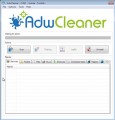The Secure Search is a hijacker. It is a type of malicious software. Unlike viruses, it will not delete or infect your files, but its actions will cause certain problems with your web-browser. This is because that it’ll infect your PC, get full access to your web browsers like Google Chrome, Mozilla Firefox, IE and Microsoft Edge and be able to change their settings. Of course, it did not ask you for permission and do it secretly as possible. Once your web browser settings will be replaced, you will be redirected to unwanted pages completely, certain of which can be dangerous or misleading pages. For this reason, we recommend that you remove hijacker infection as soon as possible and thereby revert back your previous homepage and search engine.
As mentioned above, the Secure Search hijacker also modifies the internet browser’s search provider. So, your web browser, when searching something, will show a hodgepodge of ads, links to unwanted and ad web-pages and search results from the big search engines such as Google or Bing. As a result, actual use of a web-browser’s search becomes uncomfortable. Moreover, it may also lead to slowing or even freeze your browser.
Some browser hijackers also contain adware (sometimes named ‘ad-supported’ software) which can be used to open unwanted advertisements and or collect user info which can be used for marketing purposes. These unwanted advertisements can be shown in the form of pop-unders, pop-ups, in-text ads, video advertisements, text links or banners or even massive full page advertisements. Most of the ad supported software is made to display ads, but certain ad supported software is form of spyware that often used to track users to collect lots of personal information.
The Secure Search browser hijacker infection can alter settings of all your typical internet browsers, but often that the unwanted software can also infect all types of internet browsers by modifying their desktop shortcuts. Thus forcing the user to see Secure Search intrusive web page every time run the internet browser.
Table of contents
- What is Secure Search
- Secure Search redirect removal guide
- Manual Secure Search removal
- Uninstall suspicious and potentially unwanted programs using Microsoft Windows Control Panel
- Fix browser shortcuts, modified by Secure Search hijacker
- Get rid of Secure Search redirect from Chrome
- Remove Secure Search from Microsoft Internet Explorer
- Remove Secure Search from FF by resetting internet browser settings
- Secure Search home page automatic removal
- Manual Secure Search removal
- Stop Secure Search redirect and other unwanted web-sites
- How to Secure Search browser hijacker infection get installed onto machine
- To sum up
Thus, it is clear that the presence of browser hijacker infection on your PC is not desirable, and you need to clean up your PC ASAP. Follow the guidance below in order to delete Secure Search from Google Chrome, FF, MS Edge and Internet Explorer.
Secure Search redirect removal guide
There are a few methods which can be used to get rid of Secure Search. But, not all PUPs such as this browser hijacker infection can be completely removed using only manual ways. Most often you’re not able to uninstall any hijacker using standard MS Windows options. In order to delete Secure Search you need complete a few manual steps and use reliable removal tools. Most IT security experts states that Zemana Anti-malware, Malwarebytes or AdwCleaner tools are a right choice. These free programs are able to find and remove Secure Search from your computer and revert back your web browser settings to defaults.
Manual Secure Search removal
The few simple steps will help you remove Secure Search . These Secure Search removal steps work for the Mozilla Firefox, Google Chrome, IE and Microsoft Edge, as well as every version of MS Windows operating system.
Uninstall suspicious and potentially unwanted programs using Microsoft Windows Control Panel
First of all, check the list of installed applications on your PC system and delete all unknown and recently installed software. If you see an unknown program with incorrect spelling or varying capital letters, it have most likely been installed by malicious software and you should clean it off first with malicious software removal tool such as Zemana Anti-malware.
- If you are using Windows 8, 8.1 or 10 then press Windows button, next click Search. Type “Control panel”and press Enter.
- If you are using Windows XP, Vista, 7, then press “Start” button and click “Control Panel”.
- It will show the Windows Control Panel.
- Further, click “Uninstall a program” under Programs category.
- It will open a list of all programs installed on the computer.
- Scroll through the all list, and remove suspicious and unknown applications. To quickly find the latest installed applications, we recommend sort software by date.
See more details in the video tutorial below.
Fix browser shortcuts, modified by Secure Search hijacker
Now you need to clean up the web-browser shortcuts. Check that the shortcut referring to the right exe-file of the browser, and not on any unknown file.
Right click on the shortcut of infected internet browser as shown in the figure below.
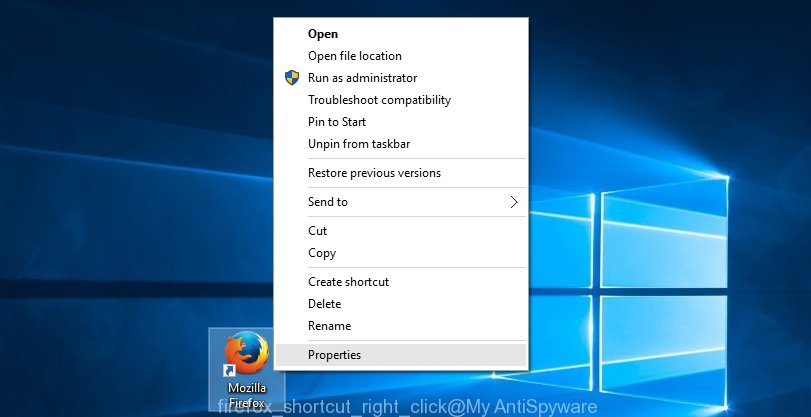
Select the “Properties” option and it’ll open a shortcut’s properties. Next, click the “Shortcut” tab and then delete the “http://site.address” string from Target field as shown on the screen below.
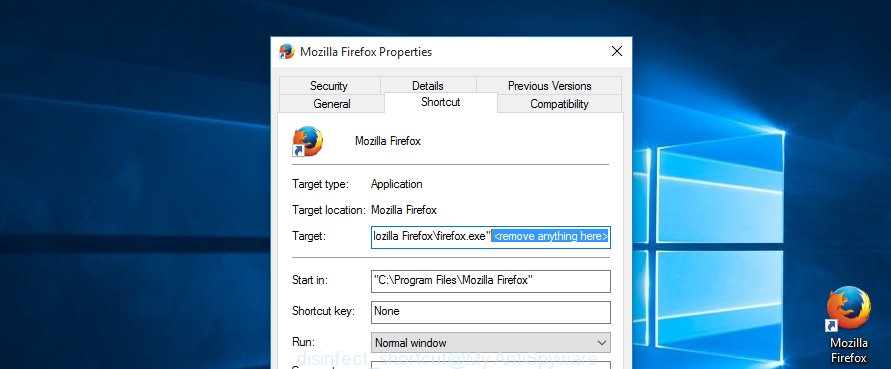
Then press OK to save changes. Repeat the step for all web-browsers that are rerouted to the Secure Search undesired web-page.
Get rid of Secure Search redirect from Chrome
In order to be sure that there is nothing left behind, we recommend you to reset Google Chrome web browser. It will return Chrome settings including new tab, home page and search engine by default to defaults.

- First, launch the Google Chrome and click the Menu icon (icon in the form of three horizontal stripes).
- It will display the Chrome main menu, click the “Settings” menu.
- Next, click “Show advanced settings” link, which located at the bottom of the Settings page.
- On the bottom of the “Advanced settings” page, press the “Reset settings” button.
- The Chrome will open the reset settings dialog box as shown on the image above.
- Confirm the web-browser’s reset by clicking on the “Reset” button.
- To learn more, read the article How to reset Google Chrome settings to default.
Remove Secure Search from Microsoft Internet Explorer
First, start the Internet Explorer, press ![]() ) button. Next, click “Internet Options” like below.
) button. Next, click “Internet Options” like below.

In the “Internet Options” screen select the Advanced tab. Next, click Reset button. The Internet Explorer will display the Reset Internet Explorer settings dialog box. Select the “Delete personal settings” check box and click Reset button.

You will now need to reboot your PC for the changes to take effect. It will delete Secure Search browser hijacker, disable malicious and ad-supported internet browser’s extensions and restore the IE’s settings such as startpage, newtab and default search engine to default state.
Remove Secure Search from FF by resetting internet browser settings
The Firefox reset will keep your personal information such as bookmarks, passwords, web form auto-fill data and delete unwanted search provider and start page such as Secure Search, modified preferences, extensions and security settings.
Launch the Firefox and press the menu button (it looks like three stacked lines) at the top right of the web browser screen. Next, click the question-mark icon at the bottom of the drop-down menu. It will open the slide-out menu.
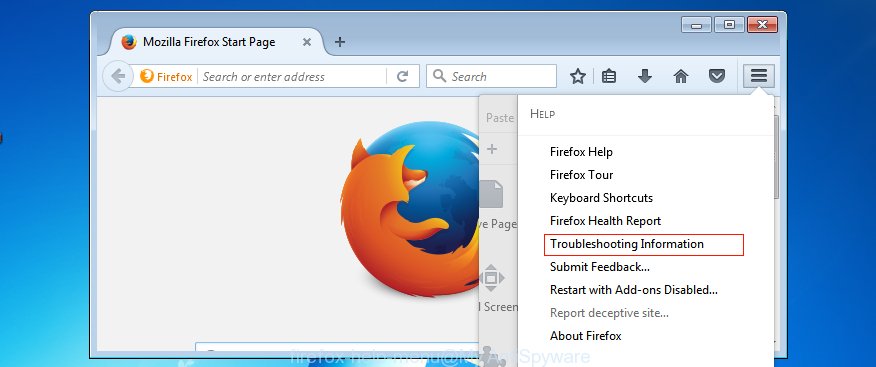
Select the “Troubleshooting information”. If you are unable to access the Help menu, then type “about:support” in your address bar and press Enter. It bring up the “Troubleshooting Information” page as shown on the screen below.

Click the “Refresh Firefox” button at the top right of the Troubleshooting Information page. Select “Refresh Firefox” in the confirmation dialog box. The Firefox will start a process to fix your problems that caused by the Secure Search browser hijacker infection. When, it’s finished, click the “Finish” button.
Secure Search home page automatic removal
Run malware removal utilities to remove Secure Search automatically. The free software utilities specially created for browser hijacker, ‘ad supported’ software and other potentially unwanted applications removal. These tools may remove most of hijacker from Google Chrome, Internet Explorer, FF and Edge. Moreover, it can remove all components of Secure Search from Windows registry and system drives.
Scan and free your computer of Secure Search with Zemana Anti-malware
We recommend using the Zemana Anti-malware. You can download and install Zemana Anti-malware to detect and delete Secure Search search from your computer. When installed and updated, the malware remover will automatically scan and detect all threats present on the computer.
Download Zemana Anti-Malware from the link below.
165036 downloads
Author: Zemana Ltd
Category: Security tools
Update: July 16, 2019
Once the downloading process is complete, run it and follow the prompts. Once installed, the Zemana AntiMalware will try to update itself and when this procedure is done, press the “Scan” button to perform a system scan with this tool for the browser hijacker which cause a reroute to Secure Search site.
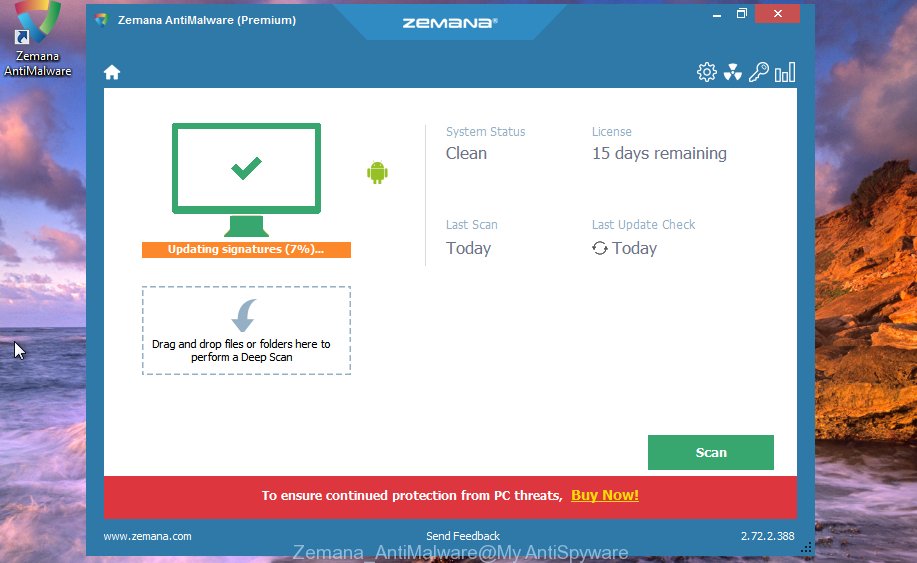
This process may take quite a while, so please be patient. When a threat is detected, the number of the security threats will change accordingly. Wait until the the scanning is complete. All detected threats will be marked. You can get rid of them all by simply click “Next” button.
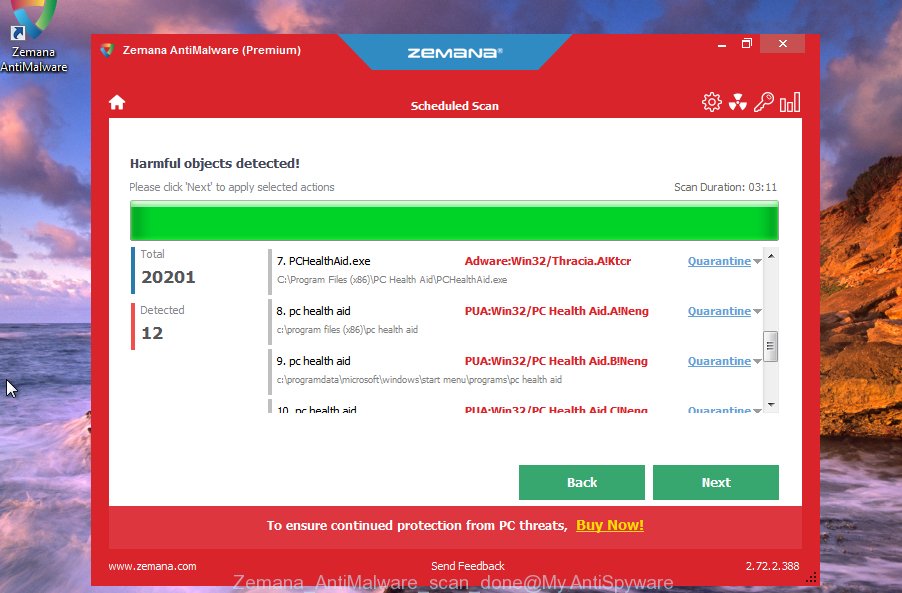
The Zemana AntiMalware will delete hijacker infection that redirects your internet browser to intrusive Secure Search site and move items to the program’s quarantine.
Use Malwarebytes to remove hijacker infection
Delete Secure Search hijacker manually is difficult and often the browser hijacker is not completely removed. Therefore, we recommend you to run the Malwarebytes Free which are completely clean your machine. Moreover, the free application will help you to delete malware, potentially unwanted software, toolbars and adware that your computer may be infected too.
Download Malwarebytes Free on your PC system by clicking on the link below. Save it on your desktop.
327265 downloads
Author: Malwarebytes
Category: Security tools
Update: April 15, 2020
After the download is finished, close all windows on your computer. Further, run the file called mb3-setup. If the “User Account Control” prompt pops up like below, click the “Yes” button.

It will open the “Setup wizard” that will help you set up Malwarebytes on the personal computer. Follow the prompts and don’t make any changes to default settings.

Once installation is complete successfully, press Finish button. Then Malwarebytes will automatically start and you can see its main window like below.
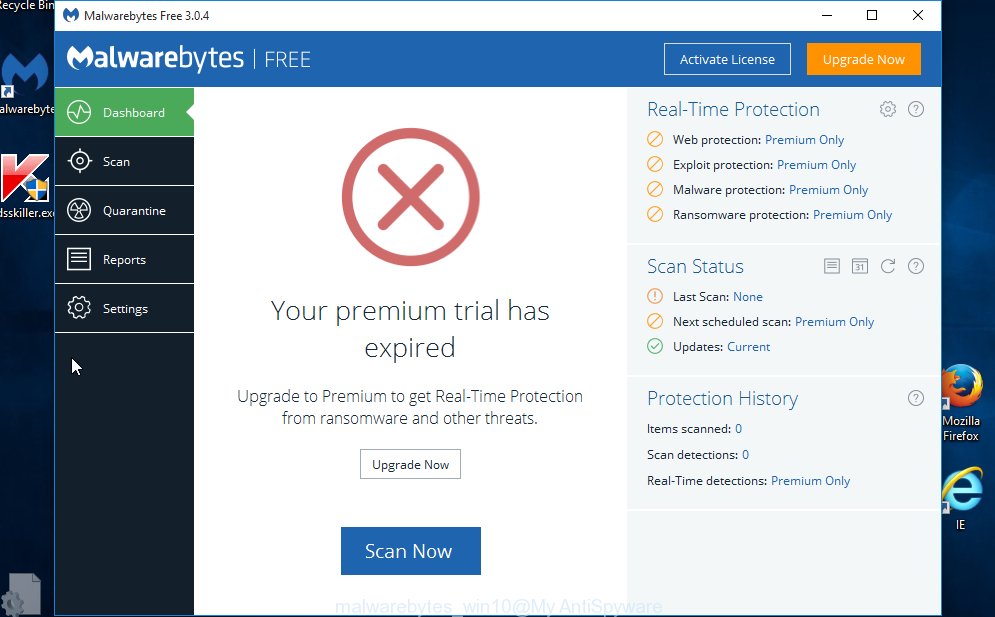
Next, click the “Scan Now” button It’ll scan through the whole personal computer for the browser hijacker which reroutes your internet browser to annoying Secure Search site. This procedure may take some time, so please be patient. While the tool is scanning, you can see how many objects it has identified as being infected by malware.
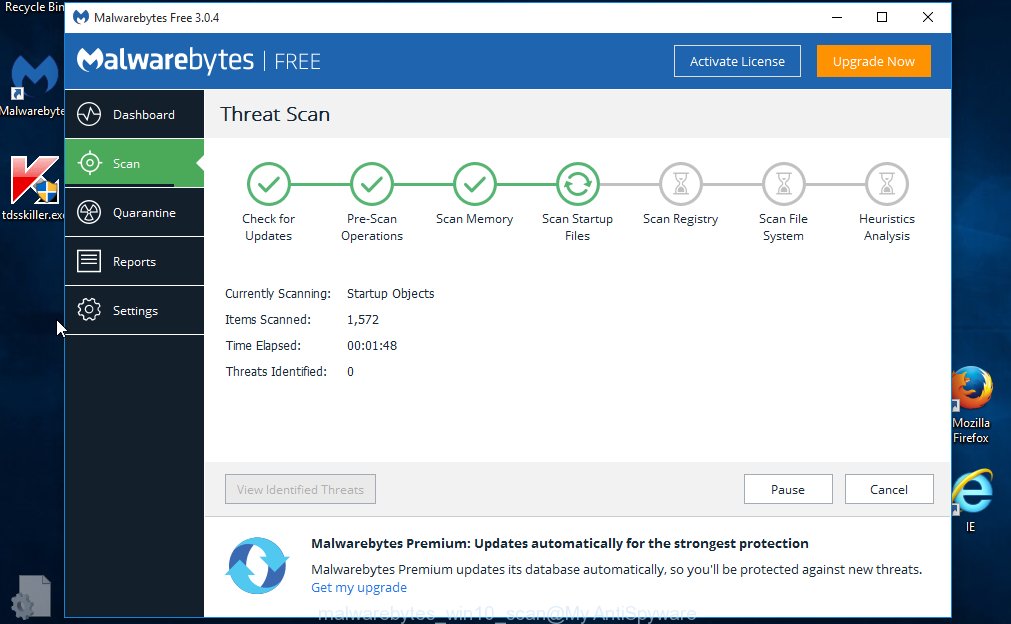
After it has finished scanning your computer, it’ll show a scan report. Review the scan results and then press “Quarantine Selected” button.

The Malwarebytes will begin to delete Secure Search browser hijacker infection related files, folders and registry keys. When finished, you can be prompted to restart your computer. We recommend you look at the following video, which completely explains the procedure of using the Malwarebytes to delete hijacker infections, adware and other malware.
If the problem with Secure Search startpage is still remained
AdwCleaner is a free removal tool that can check your computer for a wide range of security threats such as adware, browser hijackers such as Secure Search, potentially unwanted applications as well as other malicious software. It will perform a deep scan of your computer including hard drives and Windows registry. Once a malware is detected, it will help you to delete all detected threats from your machine by a simple click.
Download AdwCleaner by clicking on the link below.
225631 downloads
Version: 8.4.1
Author: Xplode, MalwareBytes
Category: Security tools
Update: October 5, 2024
Once downloading is finished, open the file location. You will see an icon like below.
![]()
Double click the AdwCleaner desktop icon. When the utility is opened, you will see a screen like below.
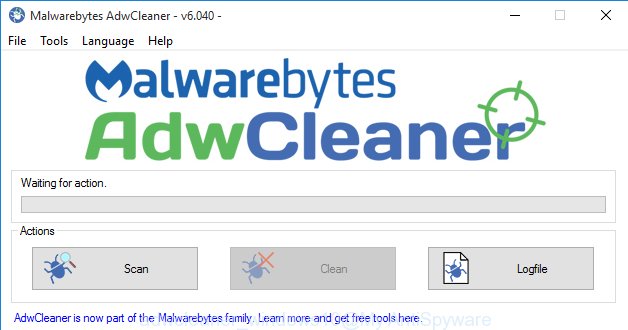
Further, click “Scan” button to perform a system scan for the hijacker which designed to reroute your internet browser to the Secure Search web-site. This process can take quite a while, so please be patient. After finished, it’ll display a screen which contains a list of malware that has been detected as shown on the screen below.
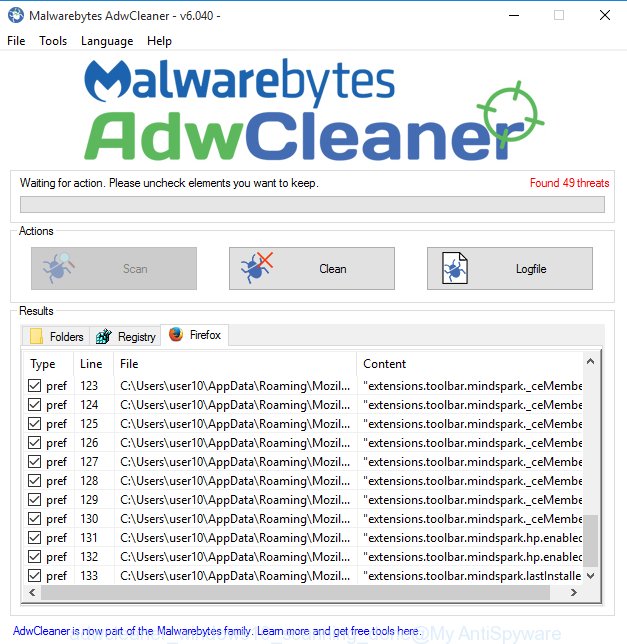
In order to delete all items, simply click “Clean” button. It will open a prompt as shown on the screen below.

You need to click “OK”. After disinfection is finished, the AdwCleaner may ask you to restart your computer. When your computer is started, you will see an AdwCleaner log.
These steps are shown in detail in the following video guide.
Stop Secure Search redirect and other unwanted web-sites
Run an ad blocking utility like AdGuard will protect you from malicious ads and content. Moreover, you may find that the AdGuard have an option to protect your privacy and stop phishing and spam sites. Additionally, ad blocker applications will help you to avoid intrusive pop-ups and unverified links that also a good way to stay safe online.
- Download AdGuard program by clicking on the following link.
Adguard download
26898 downloads
Version: 6.4
Author: © Adguard
Category: Security tools
Update: November 15, 2018
- Once downloading is done, run the downloaded file. You will see the “Setup Wizard” program window. Follow the prompts.
- Once the installation is done, click “Skip” to close the installation application and use the default settings, or click “Get Started” to see an quick tutorial which will help you get to know AdGuard better.
- In most cases, the default settings are enough and you don’t need to change anything. Each time, when you start your personal computer, AdGuard will run automatically and stop popup advertisements, web sites such Secure Search, as well as other harmful or misleading web-pages. For an overview of all the features of the program, or to change its settings you can simply double-click on the icon named AdGuard, which may be found on your desktop.
How to Secure Search browser hijacker infection get installed onto machine
Probably Secure Search browser hijacker get installed onto your computer when you have installed some free programs such as E-Mail checker, PDF creator, video codec, etc. Because, most often, a hijacker infection can be bundled within the setup files from Softonic, Cnet, Soft32, Brothersoft or other similar web-sites that hosts free software. So, you should launch any files downloaded from the Internet with great caution! Always carefully read the ‘User agreement’, ‘Software license’ and ‘Terms of use’. In the process of installing a new application, you need to select a ‘Manual’, ‘Advanced’ or ‘Custom’ setup method to control what components and additional applications to be installed. Nevertheless, even removing the application, which installs this Secure Search browser hijacker, you do not delete the hijacker infection itself. Your web-browser settings will not be restored. Therefore, you must follow the step by step instructions above to restore your startpage, new tab and default search provider.
To sum up
After completing the steps outlined above, your personal computer should be free from hijackers, ad-supported software and malware. The Firefox, Google Chrome, Internet Explorer and MS Edge will no longer show Secure Search intrusive startpage on startup. Unfortunately, if the step-by-step tutorial does not help you, then you have caught a new browser hijacker, and then the best way – ask for help in our Spyware/Malware removal forum.

